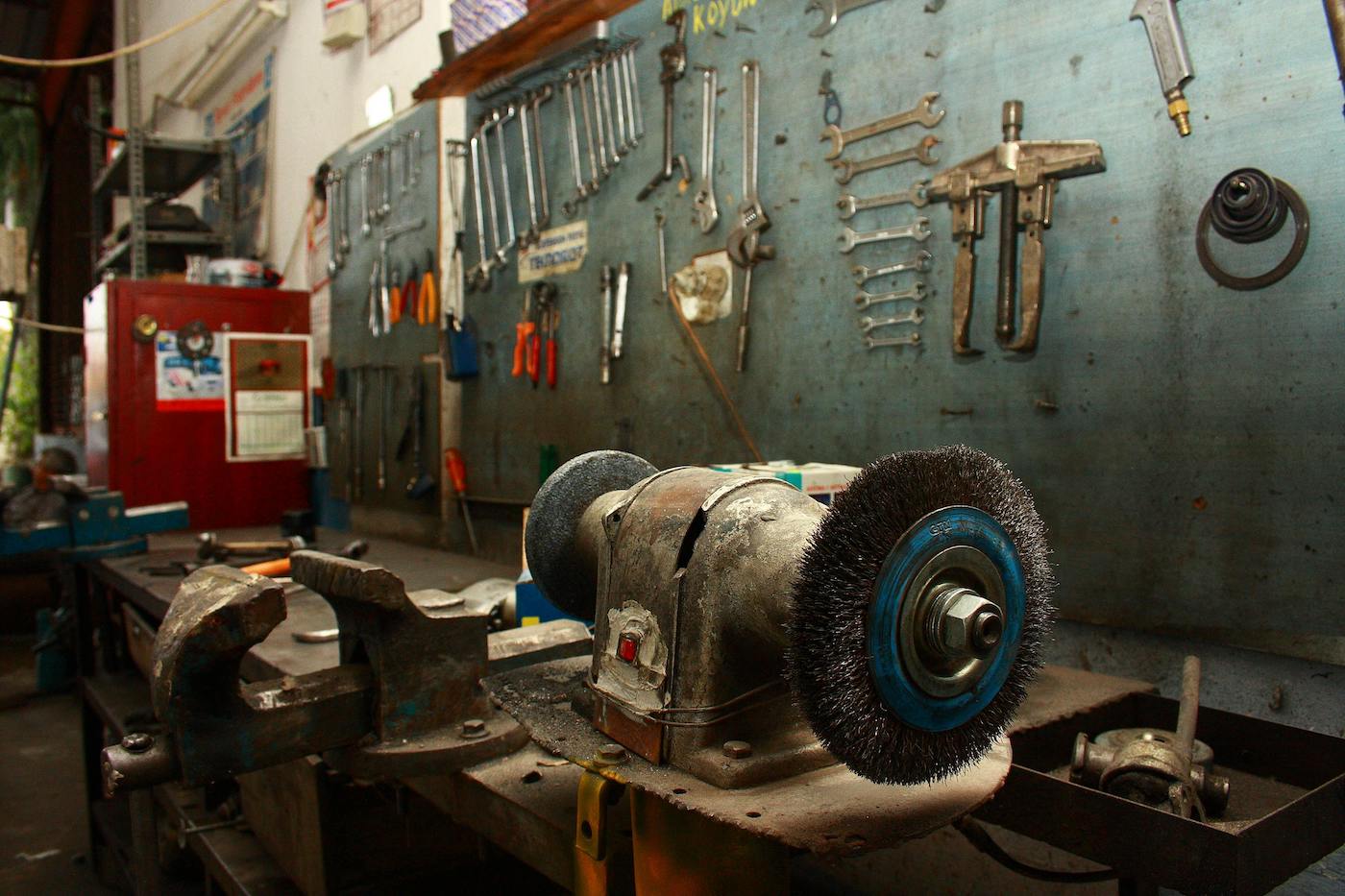Every motorcyclist who has successfully completed a mechanical or electrical repair, installed a new farkle, or accomplished some other upgrade or modification knows the satisfaction of setting out to improve their bike and fulfilling that mission. Usually, getting from the launchpad to the destination in such a project requires much more than fleshy fingertips. Our bodily appendages aren’t suited for the vast majority of moto-interventions, which require non-human features like perfectly parallel flat surfaces or a hexagonal post shape, all with the hardness of steel, or enough sensitivity to precisely detect the amount of torque being applied or the voltage passing through a circuit.
Our tool collections provide a wealth of prosthetics to greatly expand the capabilities of our physical apparatus, allowing us to grip and twist and lever hard parts in ways we couldn’t begin to do with our bare hands. And they give us the ability to discern and measure attributes of which our natural senses would only provide the most general awareness – or no awareness at all. Tools literally make us superhuman. The broader our assortment of options in the toolbox, the closer to omnipotent we become. While the transfer of copious torque to our bike’s rear wheel offers the experience of wielding great power, something similar can occur with the motor off and the machine sitting still. Whether in the garage or on the side of a road or trail, effectively applying insight, strategy and force with a good set of tools confers upon the motorcyclist another version of heroic potency.
One of the most rewarding moments in my half-century as a motorcyclist occurred many miles into the wilderness after a riding buddy crashed his dirt bike crossing a jagged rock garden. His clutch cover had taken the brunt of the impact and cracked into four or five pieces. Luckily, these were all still loosely in place and only a small amount of oil had been lost before we flipped his mount over onto its other side. Obviously, he couldn’t ride back to the trailer with his motor in this condition. Pushing his disabled bike over the grueling terrain we’d traversed only with great difficulty under full power would have been a monumental undertaking for two people, requiring many more hours than we had daylight. Plus, we’d have had to stop and start over and over countless times to retrieve my motorcycle after each stretch of pushing his. Our progress would be little faster if we’d left the broken bike for a later repair and I’d tried to haul him out as a pillion, since I could barely negotiate the rugged landscape solo and had no provision whatsoever for a passenger on my dedicated off-roader. I had a tow strap, but it was useless on this steep and lumpy topography. (My friend learned sturdy engine guards are worth every penny they cost and then some.)
Although it meant tolerating a rather hefty load in my backpack, I always carried an extensive set of tools and supplies when venturing far from civilization. Often, I’d questioned the merit of doing so, given the extra discomfort involved and the rarity of needing anything beyond the nominal kit supplied by the factory and stored conveniently under my seat. On this occasion, however, I couldn’t have been happier about bringing augmentation. Not only was I able to quickly remove the shattered clutch cover (which on his bike required pulling several other parts as well), but I had a rag and some solvent with which to clean it, along with a roll of JB Weld metal epoxy to glue the pieces back together. He was up and running again in less than two hours and never had to replace his jigsaw-style clutch cover during the rest of the time he owned that machine. Of course, there have been plenty of other times a mid-ride repair saved me many hours and the expense of a tow, but being able to restore the functionality of my friend’s clutch cover that day probably spared two riders the most arduous effort they’d ever have to exert as motorcyclists. It felt like rescuing all of Gotham City.

Another type of tool-related gratification has to do with the use of very high-quality or specialty hardware. With experience, the home mechanic develops a taste for the good stuff. Some tools are worlds better than others, whether it’s a matter of their graceful design, meticulous craftsmanship, wide-ranging versatility or proven durability. We can’t always know at the outset which tools will serve us best. A beautifully sculpted piece may actually be awkward or uncomfortable to handle. A terribly clever contraption may break under mild and expectable strain. And a fancy, expensive item may not work as well as a simpler, cheaper version. However, in most cases we do get what we pay for, especially when it comes to tools purpose-built for narrowly defined applications. Unfortunately, these can be the absolute worst values in all of tooldom, costing an arm and a leg and getting used the least often – maybe only once. There are many situations where the cost of the necessary special tools exceeds what a shop would charge to do the whole thing for us, but we might still opt to DIY because of the feeling of mastery doing so will grant us. Sure, those tools may sit dormant for the rest of our lives, but we know they’re ours if we ever need them again. That sense of preparedness, even if it’s only potential, can be a source of confidence and pride. No, this isn’t rational, but neither is most human behavior.
An exceptionally frustrating moment for the home mechanic is the surprise discovery a special tool is required. This seems to happen mainly when we’re past the point of no return on a particularly involved project, with lots of disassembly already performed and no way to retrace our steps without the peculiar equipment we lack. This can also happen in the case of some mundane deficit in our ever-evolving tool collection; it might just be a matter of having yet to add a specific size of wrench or socket. This is one of the best reasons to always read through a procedure in its entirety before beginning. That seems like plain ol’ common sense, but I know plenty of grease monkeys who get too excited about tearing into their machinery to exercise the patience and prudence involved in reading the full list of steps in a repair manual first. I also know how such folks can smugly dismiss following instructions as beneath them, preferring instead to explore the unfamiliar territory without a map like a true pioneer; this is part of the fun. Refer to those tedious instructions only when all else fails! Again, this isn’t about what’s logical. It’s about the feelings we pursue in the course of using our tools. (And yes, I included myself in the term, “we.”)

The Ride Inside with Mark Barnes is brought to you by the MOA Foundation. You can join the BMW Motorcycle Owners of America quickly and easily to better take advantage of the Paul B. Grant and Clark Luster training reimbursement programs offered by the Foundation.
No matter how exotic or ordinary the needed tool, there’s no guarantee it will be readily available for purchase. Depending on what our local hardware stores have in stock, or the time required to order and receive some bespoke weirdness from our motorcycle’s manufacturer, we might be stranded for a long time. If we’re not willing to wait, or we deem the expense involved excessive, we may feel compelled to devise and fabricate our own home-made substitute. This is a second-order process, usually involving the use of more tools to create a new tool, and it’s doubly satisfying when successful. If we figure out how to concoct a workable stand-in, assembled from scrap parts or cannibalized other tools, we’ve saved time and money, and – perhaps most importantly – demonstrated our amazing resourcefulness and ingenuity, all on top of accomplishing whatever the new tool was meant to do. I’ve spent whole afternoons crafting such makeshift devices from the most random assortment of junk imaginable, and afterward felt like this was more enjoyable than any other aspect of the entire project. I’ve also ended up wasting many, many hours in failed attempts to create something useful, eventually regretting the fact I refused to just promptly buy what was required, like a more sensible person would have done. Now I’m out all that time and effort and still have to foot the bill for the special tool. It’s a type of adventure, I suppose, and adventure involves risk.
Something home mechanics learn over time is the wisdom of trying the easiest solution first. I don’t mean something overly simplistic, like hitting an uncooperative part with a hammer (although in rare cases that’s exactly what’s needed). Instead, I’m referring to a careful consideration of all the possibilities to ensure an easy fix hasn’t been overlooked. Is there really an electrical fault in this bike that won’t start, or was the kill switch accidentally toggled to the wrong position? (Based on a true story – actually, two or three true stories.) When considering the adequacy of the tools at hand, might there be a way to employ one in a non-standard manner to solve the problem? A few minutes spent thinking outside the box – the toolbox, that is – might save us a lot more time than pressing ahead with conventional ideas and methods. Maybe the handle of tool X would be a perfectly effective implement if we could envision the tool being held by what would normally be its business end. What could be easier, right? Ah, but we have to employ the requisite imagination. When we do, this can be the most efficient improvisational tool use of all, and the “Aha! moment” always provokes a hearty chuckle.
In the end, the right tool for the job is simply the one that works and is currently available. It might not be a “real” tool built by a tool manufacturer, and it might not be a tool intended for the service into which we press it. It could be an ancient, well-worn relic, time-tested and handed down, or an elegantly sophisticated new purchase, full of promise. Whatever the situation, our tools are extremely important contributors to the joys of motorcycling, whether we spend lots of time hunkered over parts scattered across a garage floor or merely plug an occasional tire puncture on the side of the road. Tools can give us power and pleasure approaching levels supplied by the motorcycles on which we use them.
Mark Barnes is a clinical psychologist and motojournalist. To read more of his writings, check out his book Why We Ride: A Psychologist Explains the Motorcyclist’s Mind and the Love Affair Between Rider, Bike and Road, currently available in paperback through Amazon and other retailers.





